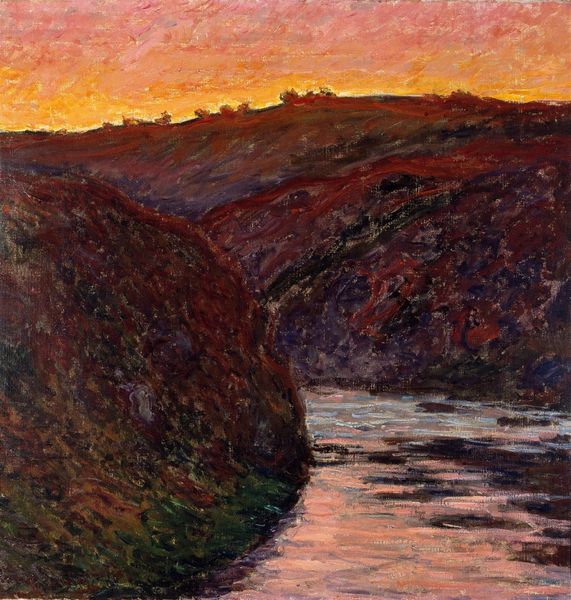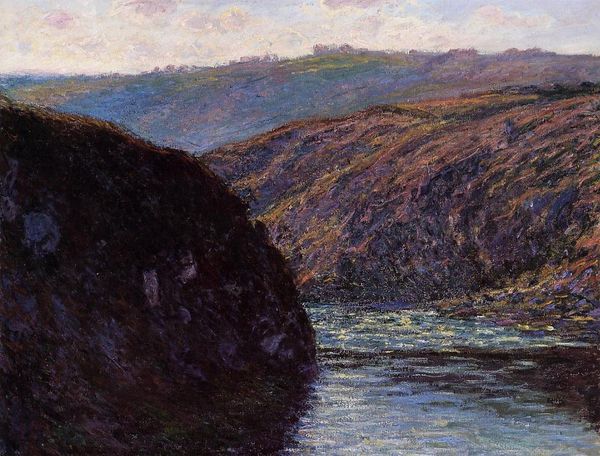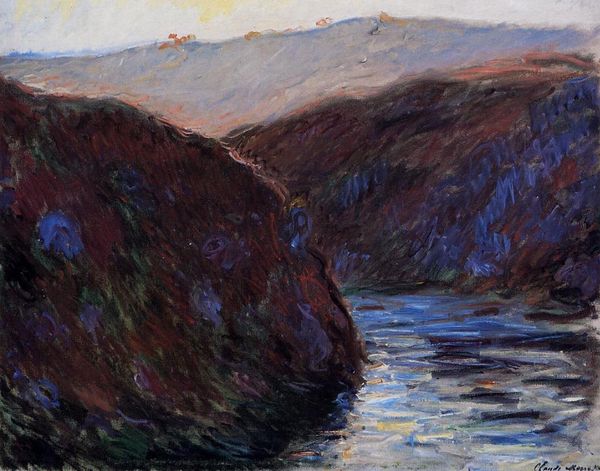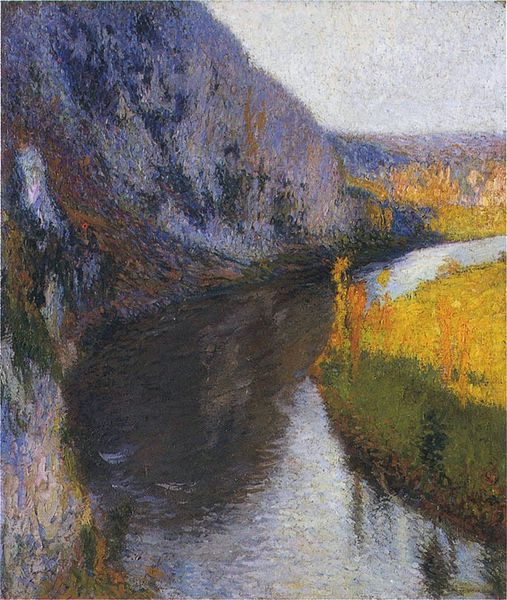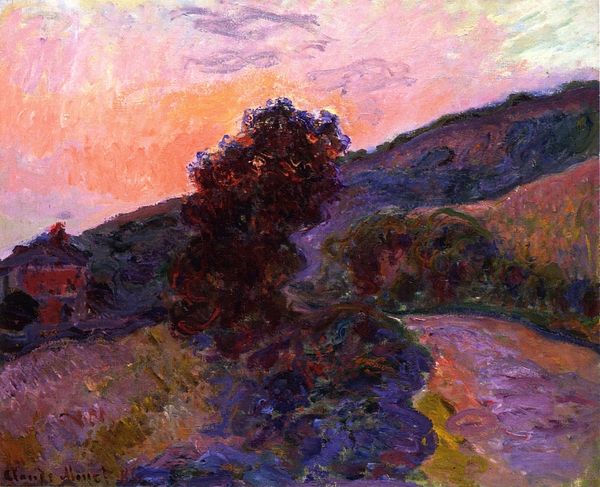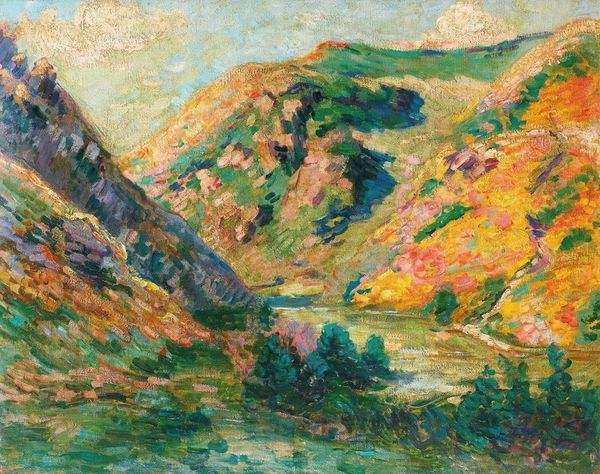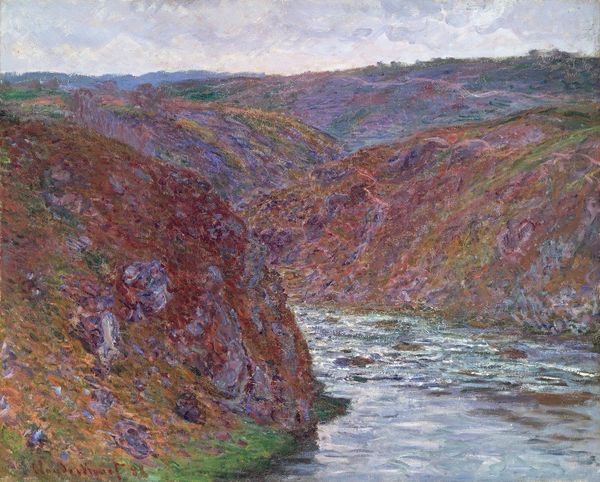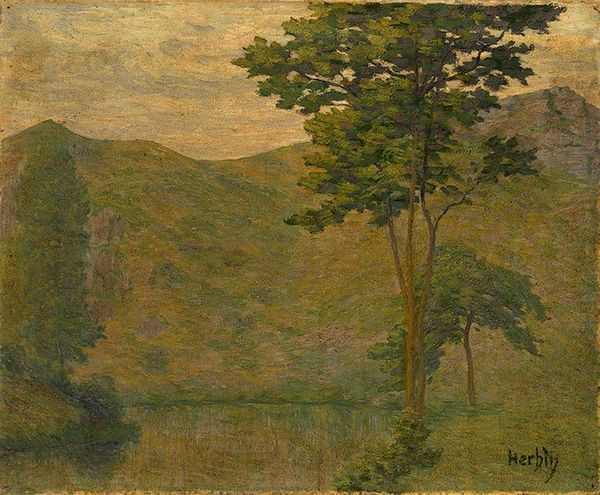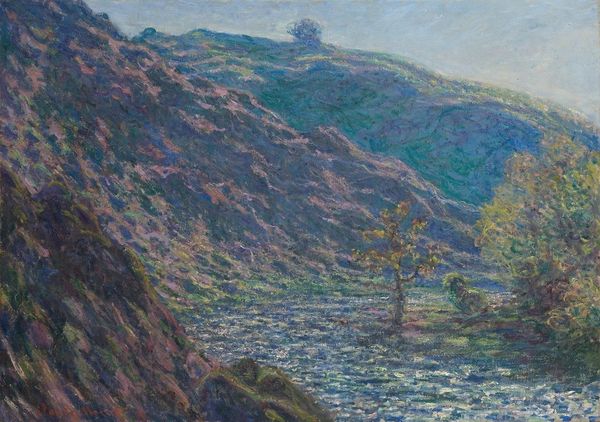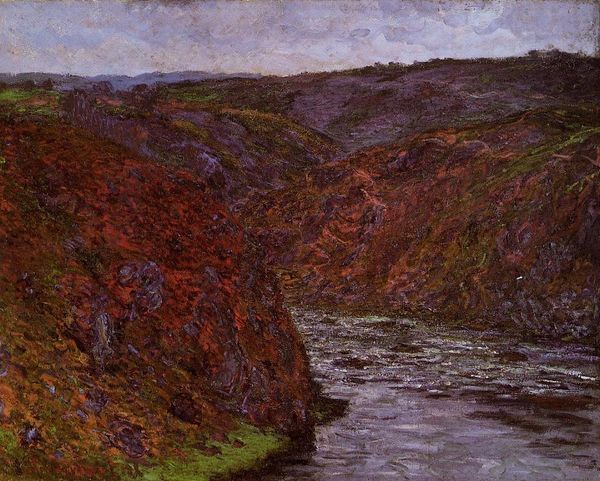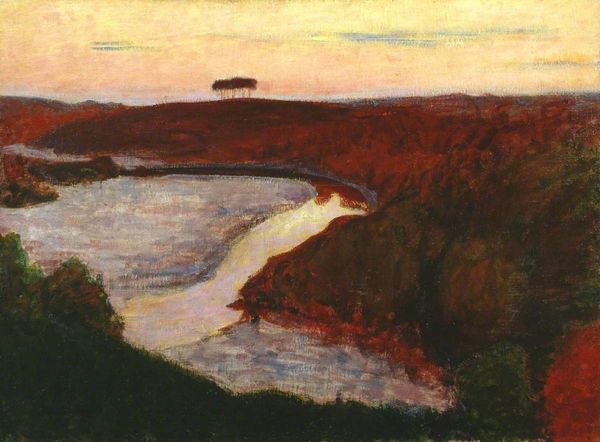
painting, plein-air, oil-paint, impasto
#
painting
#
impressionism
#
plein-air
#
oil-paint
#
landscape
#
river
#
impressionist landscape
#
impasto
#
rock
#
geometric
#
water
#
post-impressionism
Copyright: Public domain
Editor: This is Claude Monet’s "Valley of the Creuse," painted in 1889. It's oil on canvas, depicting a rather somber landscape. I'm struck by the heavy, almost melancholic atmosphere. What do you see in this piece? Curator: Monet is using the landscape as a vessel, isn’t he? Consider the colors: primarily blues and purples, often associated with mourning, or at least pensiveness. The river itself, snaking through the composition, is a very potent symbol of time and the subconscious, particularly given the era in which it was painted. Does this evoke anything for you in relation to Impressionism, which often focused on fleeting moments? Editor: I guess I always thought of Impressionism as bright and optimistic. So, are you saying Monet's using this scene to express something deeper than just a momentary visual impression? Curator: Exactly! Think about the rocks, almost primal and enduring, contrasted with the ephemeral reflections in the water. There's a visual dialogue happening between the permanent and the transient, a tension perhaps mirroring internal psychological states. Do you think the absence of people adds to that sense of introspection? Editor: Definitely! It's like we're looking at a stage, set for some kind of drama, but the actors are missing. Maybe *we're* supposed to be the actors, projecting our own feelings onto it? Curator: Precisely. The symbolism invites personal projection, doesn’t it? It's not merely a valley; it’s a landscape of the mind, layered with cultural memories and archetypal symbols. What do you make of the rather high horizon line? Editor: That is interesting, how it dominates the view and reduces the sky to only a glimpse of light, maybe indicating constraint or… hope on the horizon? It really pushes those themes. Curator: Well, there you have it, and the cultural and social milieu of 1889 makes one also think of the anxieties and search for meaning during the Fin de Siècle! Editor: This has really changed how I see Monet, seeing below the surface and recognizing his psychological and symbolic depths!
Comments
No comments
Be the first to comment and join the conversation on the ultimate creative platform.
